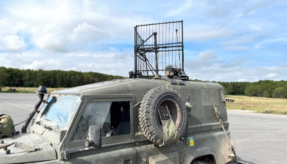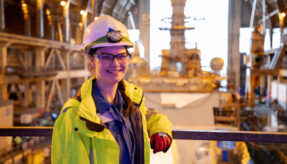
The search for innovation dominates the defence industry as the Ministry of Defence seeks to leverage potential game-changing advantages on the battlefield.
For most people this would bring to mind cutting-edge technology being developed and tested in secrecy at a secure military facility. Whilst the aesthetics of the latest unmanned aerial vehicles look like something you might expect to see in the latest sci-fi movie, innovation is not the exclusive province of hardware.
One of the priorities for innovation in defence is how to recruit, train, retain and motivate the right number of people and make the most efficient and effective use of the workforce.
People are central to defence capabilities and are core to delivering defence outputs. The MOD employs 195,520 regular military and civilian staff and 32,240 Reserves.
Spending on defence staff also accounted for around 30% (£10.3 billion) of the £36 billion Defence spending in 2016-17, with the department tasked with continually reviewing expenditure and activities to ensure that the best result is achieved with the resources available. This includes exploring all opportunities to improve the efficiency and effectiveness of our people and the supporting processes, behaviours and cultures.
Emerging technologies such as industrial robots, artificial intelligence, and machine learning are advancing at a rapid pace and the Ministry of Defence is keen to see how these technologies can be exploited.
It is anticipated that the seemingly relentless pace and scale of technological change will have a significant impact on the way the workforce – the Armed Forces, Civil Service and contractors – connects with the MOD, while the communities within the workforce are set to fundamentally change.
At the same time, the MOD is keen to stress that while the advancement of technology will bring numerous advantages, it will never replace the human capability and capacity to create, innovate, and make decisions.
In particular, value-based decisions that require moral and ethical judgment are likely to remain a human endeavour for the foreseeable future in Defence.
Instead, there is a need to better understand the implications of emerging technologies for the residual skills required to plan and embed a culture of lifelong learning.
In addition to this, the MOD also shares many of the same challenges that face other large and complex organisations when it comes to leading, managing and using people.
As part of efforts to tackle these, the Defence and Security Accelerator (DASA) launched The Defence People Innovation Challenge in an effort to seek innovative ideas from industry and academia and present them to users across both the defence and security services.
The Challenge represents a different proposition for DASA as it shifts its attention from innovative technology to people.
Mark Darvill, an Innovation Partner at DASA, explains: “Most of the challenges that we get involved in are very focused in technology areas. This one is aimed at the people space. So whilst it will still attract some HR technology, it’s all about looking at the challenges defence faces in the people space.”
The Challenge will see up to £6 million of funding committed from the Defence Innovation Fund – the £800m fund set up after the Defence Innovation Initiative – and is sponsored by the Chief of Defence People (CDP).
Mark says the CDP is the driving force behind the challenge and set the strategy for developing a case for motivated military civilian workforce: “Their aim really is to look strategically at how we recruit, retain and motivate our workforce.
“CDP has a great desire to bring in some fresh thinking. When you look outside in the enterprise community, the way that companies recruit, interact and motivate their staff has obviously changed quite a lot and changed at quite some pace. New technology-based solutions allow employees to connect with the company and the teams they work in and CDP wants to bring some of that thinking into defence.
“Defence is obviously a very different environment to work in but, having looked at it in some depth now, we think some of that thinking can be brought in to great advantage.”
The four main challenge areas are recruitment, motivation, retention and skills.
The push for innovation within the defence industry means that the Challenge will look for solutions to help recruit the right mix of capable and motivated people.
Mark explains: “As time moves on, some of the other areas that we get involved with – such as artificial intelligence or autonomous vehicles – actually require different talents, different types of people to be recruited within the defence forces alongside the normal people they need to reach out to.
“So it’s all about how do you actually reach out to people who may not have left school yet? How do you reach out to them given that they have a very different view and outlook on life and a different social environment as well?”
The second aspect to the Challenge is motivation. It will look to increase engagement by preparing people to actively lead and contribute to defence’s goals.
The third area is retention with solutions sought to help retain skills and experience of people longer within the Armed Forces.
The fourth challenge area sees DASA looking for solutions that will help secure access to knowledge, skills, experience and other attributes that are needed to meet the increasing demands of the defence workforce.
“It’s all about looking at things like reducing costs of developing new skills; how do we develop them – do we send to classrooms or can we do it in an online environment – and really looking at how we can reduce the time and resources required to develop high-level skill areas.
“The fact the Challenge represents the biggest investment in innovation in people in defence since the 1960s is a reflection of the importance placed on modernising people management in the defence industry,” says Mark.
If you would like to join our community and read more articles like this then please click here.
DASA Defence and Security Accelerator Defence People Innovation Challenge Ministry of Defence







